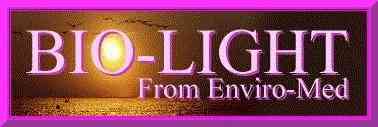 |
Enviro-Med 1600 S.E. 141st Ave. Vancouver, WA 98683 800-222-DAWN 800-222-3296 360-256-6989 |
|---|
| Contents: |
TIMED EXPOSURE TO BRIGHT LIGHT IMPROVES SLEEP AND ALERTNESS DURING SIMULATED NIGHT SHIFTS
|
|---|---|
Department of Psychiatry, Institute of Chronobiology, Cornell University Medical College, White Plains, New York, USA Many of the health and safety problems reported by shift workers result from the chronic sleep deprivation associated with shorter, fragmented day-time sleep. This reduction in the quality and duration of sleep has been attributed to a change in the phase relationship between the work period and the circadian system timing the propensity for sleep and wakefulness. This study examined the extent to which appropriately timed exposure to bright light would accelerate the circadian readjustment of physiological parameters thought to contribute to impaired performance in shift workers. A control (n=7) and treatment group (n=6) underwent a three-day transition to simulated night work. The treatment group received a single four-hour pulse of bright light (6000 lux) between 2400h and 0400h on the first night shift and dim light (<200 lux) for the remainder of the study. The control group received dim light throughout the study. Table 1. Comparison of sleep measures recorded from the Pulse and Control Groups during the final day sleep. Also shown is the net phase delay in the circadian temperature cycle (Tmin) from Baseline to the final day. Means and (standard deviations) are shown. ![[Table 1]](images/dawson_campbell_chart.gif)
The data show that by the third nightshift the phase position of the core body temperature rhythm for the treatment group had delayed by 5-6 hours whereas the control group had delayed by only 2-3 hours. When compared to the control group, the greater delay in core temperature rhythm for the treatment group was associated with significantly higher alertness across the night shift and improved sleep quality during the day. By the third day sleep, mean sleep efficiency in the treatment group was not significantly different from normal night sleep. Similarly, on-shift alertness was improved relative to the control group. The treatment group did not show the typical decline in alertness observed in the control group between 0300h and 0700h. These data indicate that a single four hour pulse of bright light between midnight and 4 a.m. is effective in ameliorating the sleep and alertness problems associated with transition to night shift. Sleep Vol. 14 pages 411-516 1991 |
|
Back to Articles |
[Contents] [Home] [Therapy] [Lights] [Order] [Articles] [About] [Feedback] [Site Map] DISCLAIMER: Enviro-Med cannot offer medical advice or recommend which individuals should receive light therapy for seasonal affective disorder, winter blues or other conditions. We advise that light therapy for seasonal affective disorder or other conditions be prescribed by a physician or other qualified health care professional and duration and timing supervised by the same. Consult with your physician to rule out any ophthalmological or other conditions that might preclude the use of light therapy. Copyright © 1997 Enviro-Med, http://www.BIO-LIGHT.com/ MAILTO:Bio-Light@Bio-Light.com
|